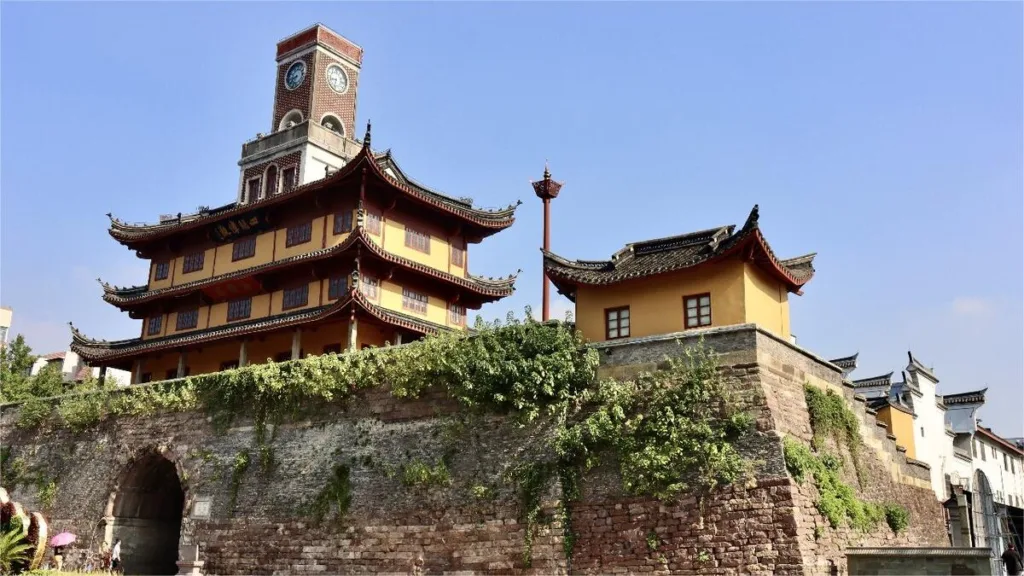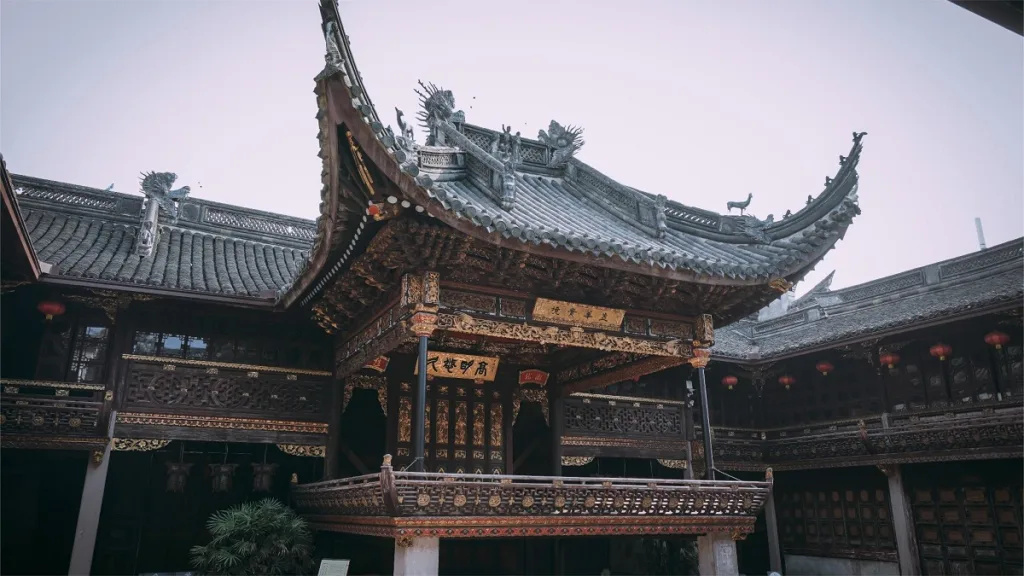Yuehu, also known as Moon Lake (月湖), is a crescent-shaped lake situated in the heart of Ningbo City. Originally excavated during the Tang Dynasty in 636 AD, it was further developed during the Southern Song Dynasty with the addition of pavilions, towers, and the planting of various flowers and trees, creating a picturesque landscape of ten islands on the lake. Additionally, the park boasts three embankments and seven bridges, which beautifully complement each other.
Since the Song and Yuan Dynasties, Yuehu has been a hub for academic and literary activities in eastern Zhejiang Province, attracting scholars, poets, and officials alike. Renowned figures such as the Tang poet He Zhizhang, the Northern Song statesman Wang Anshi, the Southern Song prime minister Shi Hao, the scholar Yang Jian from the Song Dynasty, and the Ming-Qing historian Wan Saitong have all left their mark on the park, whether through seclusion, lectures, government service, or literary works.
Yuehu Park is centered around the lake and features over sixty sculptures scattered along its shores, depicting themes of spring, summer, autumn, and winter. Visitors can enjoy the park’s scenery by taking a leisurely ride on the park’s tour vehicles, which circulate every fifteen minutes. Additionally, the park offers dining options with restaurants and cafes where visitors can relax, sip coffee, and admire the tranquil scenery outside the windows, creating a truly delightful experience.
Table of Contents
- Basic Information
- Location and Transportation
- Highlights of Yuehu Park
- Vlog about Yuehu Park
- Attractions near Yuehu Park
Basic Information
| Estimated Length of Tour | 2 hours |
| Ticket Price | Free |
| Opening Hours | 8.00 – 17.00 |
| Telephone Number | 0086-0532-88485388 |
Location and Transportation
Yuehu Park is located at 183 Xue Xue Street, Haishu District, Ningbo City, Zhejiang Province, China. To get there, you can choose one of the following ways:
Bus: Take bus 14, 71, 238, 812, 819, or 820 and get off at Yuehu Park Stop (月湖公园站).
Metro: The closest metro station to Yuehu Park is Chenghuangmiao (城隍庙, City God Temple) on line 2. After getting out of the station from Exit A, walk about 350 meters to the west to reach the park.
Highlights of Yuehu Park
Goryeo Embassy Site

Located on the eastern bank of Moon Lake in the Baokui Lane area, the Goryeo Embassy Site is a historical witness to Ningbo’s past international exchanges and the friendly interactions between China and the Goryeo Kingdom (ancient Korea). Since the seventh year of Xining (1074 AD), Ningbo began receiving Goryeo envoys. In the seventh year of Zhenghe in the Northern Song Dynasty (1117 AD), the governor of Mingzhou, Lou Yi, set up a “Goryeo Office” in Mingzhou under the decree of Emperor Huizong of Song, managing political affairs related to Goryeo’s dealings with China. The site also housed the Goryeo Embassy, serving as the residence for Goryeo envoys during the Northern Song Dynasty. It stands as a testament to the historical friendship between mainland China and the Korean Peninsula, as well as an important cultural relic reflecting Ningbo’s role in the maritime Silk Road and its political and trade relations with foreign regions.
Buddhist Hermitage Forest

Situated on Liutingzhou Island within the Yuehu Cultural Scenic Area, the Buddhist Hermitage Forest is a serene sanctuary adorned with majestic temples and pavilions. The architecture, characterized by intricate carvings and elegant designs, exudes an aura of ancient grandeur. Features like the tranquil “Release Pond” and the graceful “Water Cloud Pavilion” add to the enchanting scenery. The Hermitage Forest serves as a place for Buddhist hermits to study teachings, cultivate wisdom, propagate doctrines, and purify mind and body. Initially established as a family shrine in the 21st year of Yuan Dynasty Emperor Kublai Khan (1284 AD), it underwent transformations over the years, serving as a post station and later as temples. After the Xinhai Revolution, it was relocated to its current site and expanded with structures like the Mahavira Hall and the Hall of the Three Saints. Restoration efforts in 1989 revived the splendor of key structures such as the the Hall of Ksitigarbha, the Hall of Maitreya, the Hall of Pratyekabuddha, the Hall of Guanyin, and the Release Pond.
Costume Museum

Established in October 1998, the Costume Museum is China’s first specialized museum dedicated to showcasing the country’s clothing and apparel culture and history. It traces the growth and development of the “Hongbang” tailoring industry in Ningbo over the past two centuries. The Hongbang tailors, who initially learned their craft in Yokohama, made their mark in places like Vladivostok, Shanghai, the Northeastern provinces, and Tianjin, eventually cultivating a rich culture of Hongbang clothing. Notable achievements of Ningbo’s tailoring industry include the creation of China’s first Western suit, the establishment of the first Western-style clothing store, the invention of the first Zhongshan suit, the publication of the first Western clothing theory book, and the founding of the first Western tailoring school. The museum houses precious historical materials related to Sun Yat-sen’s creation of the first Zhongshan suit, the “Mao suit” tailored for Chairman Mao Zedong, and samples of suits worn by Premier Zhou Enlai.
Yintai Official Residence Museum

Located beside the Yan Yue Embankment, the Yintai Official Residence was built in the third year of the Daoguang era (1823) during the Qing Dynasty. Its owner, Tong Huai, served as an Imperial Commissioner in Jiangxi and Shandong provinces before becoming the Vice Minister of the Imperial Ministry. Tong Huai’s son, Tong Hua, served as an instructor in the Southern Study Hall and was the teacher of Emperor Guangxu, leading to the residence being regarded as the “former residence of the Imperial Teacher.” The Yintai Official Residence faces north and overlooks Moon Lake. It consists of a main axis featuring a gate hall, a main hall, a front building, and a rear hall, along with side buildings and a study tower to the east and west, covering an area of approximately 2300 square meters. Characterized by its orderly layout, refined materials, and rich local decoration, the residence exemplifies the typical official residences of the late Qing Dynasty in Ningbo. It serves as an excellent example for understanding ancient Chinese official residence architecture, Qing Dynasty furniture art, the lifestyle of official families, and the intrinsic cultural values embedded within.








Yuehu Park in Ningbo is located around the Tianyi Pavilion. It’s free to enter and covers a vast area, featuring exquisitely designed pavilions and towers. It’s definitely worth a stroll!